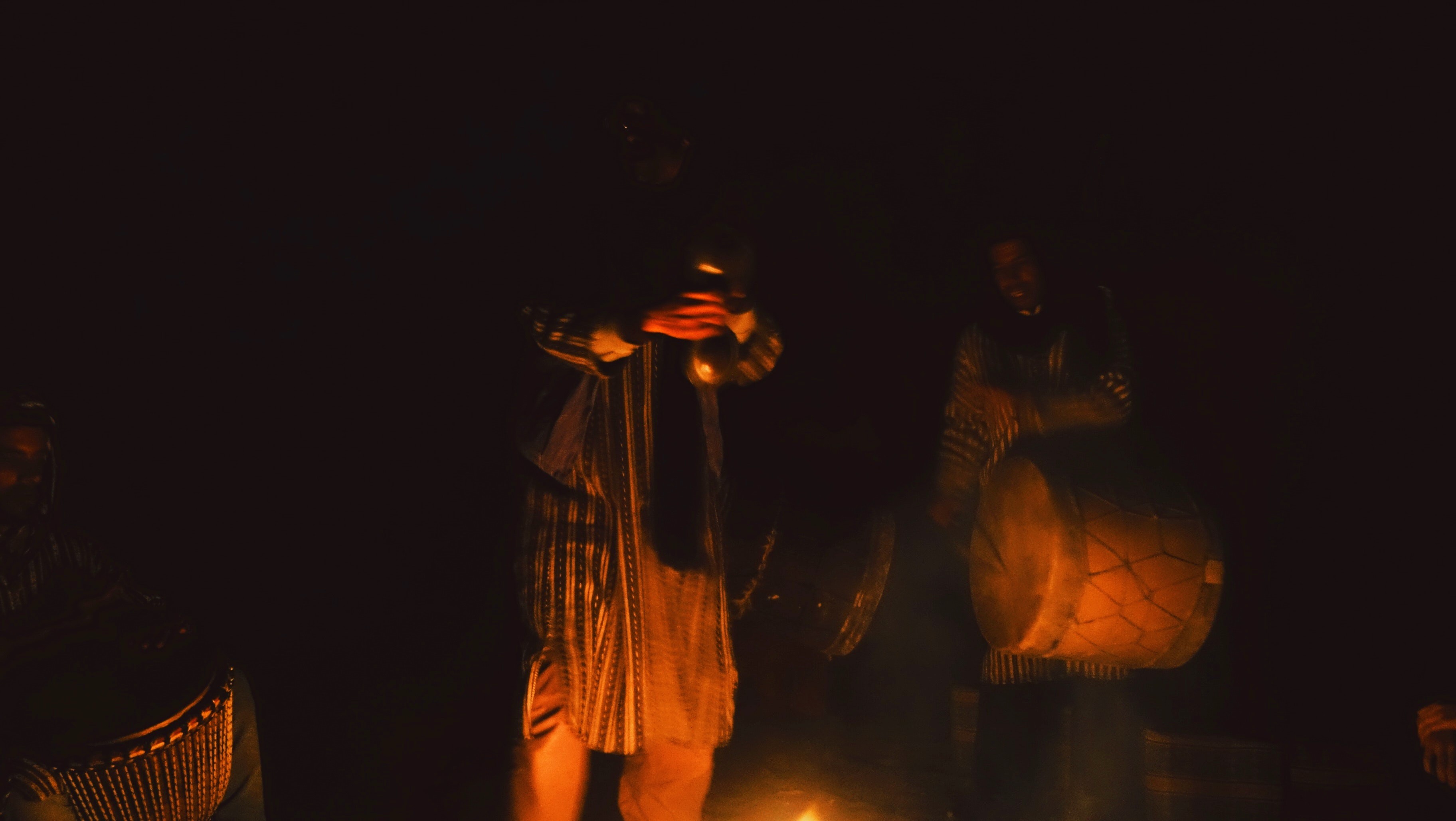I emerged from college with a solid sense of the daunting scale of our world’s environmental challenges. Yet, I was comforted by the array of amazing systems, tools, and technologies that would be of much benefit to mitigating these issues: permaculture, green urban design, alternative energy technologies, and so on. However, I quickly realized that many of these solutions were not being integrated into society. And if they were, it wasn’t happening near fast enough.
I started to understand that many well-vetted solutions weren’t being implemented because of differences in peoples’ worldview. On our planet, we have a people problem: collective trauma, tribal mentality, limited sense of self, and a lack of basic skills in collaboration are larger and more entrenched issues than creating the next technological solution.
Training Collaborative Skills
In the organizational world, there is a clear trajectory toward implementing systems that support collaboration. Tools like design thinking, agile sprints, self-organizing principles, and holacracy are taking root. This is a positive. However, we can’t simply implement a new system and expect it to fundamentally change culture. We must engage in the messy, day-to-day job of developing the interpersonal skills of the real people that bring these systems to life.
Most of us went to school and learned a lot about subject matter, and next to nothing about the process of actually working together. Now, with complex, global issues on our hands, we have no choice but to solve them technically while simultaneously growing our capacity to navigate the dynamics of power, hierarchy, tribal mentality, trauma, and group decision-making.
If we are going to “make it through” as a species, I believe we all need to get really good at working well together. Something like climate change is simply too big to take on solo; it will require an unprecedented level of collaboration.
Music
I grew up with music in the house. My dad is an amateur celtic and bluegrass musician, and my grandfather still plays sax in a swing band in New Orleans at age 95. Growing up in this environment taught me how to listen, how to feel when a group was in or out of sync, and how to express myself while staying in rhythm with others.
In the arts, there is a wealth of knowledge around working collaboratively. Music, theatre, dance, and many other art forms could not function without the kind of training that develops collaborative skills. If you listen to the top jazz players talk about the way they work with colleagues, it is a language of deep communication. “Keep your ears open, keep your eyes open, and keep your heart open,” as jazz trumpeter Wynton Marsalis says. It is not just knowing the structure; it is raw, human communication in real time with audible feedback.
In my workshops, I use music and embodiment exercises to teach people core skills for navigating group dynamics and leading effectively. I use a lot of different games and structures, but I keep coming back to a style of body music created by Bobby McFerrin called Circlesinging.
Here’s what a simple warm-up game of “three in the middle” looks like. One person steps into the middle of a circle and generates a repeating musical phrase. It could be a rhythm, a melody, a baseline, etc. Once that person is in the groove, a second person comes in to add to what the first is doing. Once they have gelled, a third person steps in to layer in a final element. When the trio is working all together, they then find a way to come to a close, step out, and another trio starts from scratch. Sounds simple, right? Yet, it is amazing how vulnerable, real, and open one has to be to step into a large group of people to do this. It is a practice of navigating relationship, power, and creativity in a real, on-the-spot way.
The art of Circlesinging is a step up from this. It involves a conductor stepping into the center of a circle solo. He or she must generate a piece of a song and pass it off to a section of the circle. No words, just using body language. Layer by layer, other pieces are added until the conductor has the entire group working together. It is a magical, messy, wondrous process of creation. Leading a group like this is a deep mirror for the ways that we show up as a leader in our lives. Can we stand in our power? Can we generate on the spot? Can we communicate effectively to a group? Can we manage complexity? In these kinds of simple “playful” games, we learn volumes about ourselves and the way we relate to the world around us.
It is crucial to bring people out of their normal, serious, cognitive routines and into spaces of play where new nervous system pathways can be mapped without the high-stress, workplace baggage of “getting it wrong.” From there, we can return to strategic meetings, project planning, and business operations with a deeper understanding of how we lead, how we follow, and where we get consistently stuck. It is through play that we find our edges and prototype new ways of moving through them.
Let’s look at some of the basic skills necessary to play and collaborate well.
1) Inner Listening:
If we want to show up with spontaneity and vitality in group settings, we have be connected with ourselves first. We have to know our starting point.
To get a sense of what I mean, scan these domains of yourself. For each one, take a moment to close your eyes and tune in:
- Mind– What is your mind like right now? Is it open, spacious, available or contracted, whirling, narrow, stuck in a loop? Feel this.
- Heart– How is your heart? What is the texture and color of emotion you are feeling? Allow it to expand for a moment.
- Body– How is your body? Do you feel deeply grounded or slightly floating? Where is there flow and where is there tension?
- Space — Notice the part of you that is just aware of all this. A field of timeless, spacious, presence in which you mind, heart, and body are arising.
We can’t play or collaborate effectively without knowing where we are right now, in this moment.
2) Outer Listening:
Deeply listening is a radical act. It involves much more than just the ears. Think of the way you would receive a painting or a beautiful scene in nature — whole-bodied experiencing. To play and collaborate well, we must be able to listen on this emotional, embodied level to our colleagues and partners. It is not just the content they are expressing that is important.
Try this: Relax your body and expand to contact the whole room or space you are in right now. Listen to the sounds. Take it all in. If there are people in the room, ask yourself, how are they? What is the feeling they are putting off by their body language, speed, or mood? What is the “song” this entire environment is playing?
You can’t truly play if you can’t sense the space or where someone else is coming from.
3) Expressing in Connection:
Of course, collaboration and play are not all about just observing. We must speak up, chime in, push back, direct, and redirect. The trick, however, is doing these active moves without losing connection to our sense of inner & outer listening. If we can stay “plugged in,” our interventions and communication will have exponentially more power and depth.
Experiment — The next interaction you have with someone try to stay connected to a place of embodied listening while you speak. Let your communication ride on the felt sense of your body and of your felt sense of their body. If something spontaneous arises, let it come, and take note if the other person responds differently than you expected.
A Call to Play
I invite you to find a place where you can step outside of your normal work, family, and even spiritual development routine, where you can wholeheartedly engage your sense of play. Whether through music, dance, theatre, or otherwise, find a place where you can collaboratively create with others and study the dynamics that arise. These kinds of spaces are a goldmine for developing “real world” skills.
When we get into touch with our embodied play, we can see limiting aspects of ourselves more clearly and start to rewire the whole way we operate. A world of creativity and innovation opens to us.
So, May you find your play, and ride its intelligence to transform the most serious of places.
Spencer Honeyman is the Community Director for a co-living company where he trains and supports a network of West Coast communities in the art of living well together (opendoor.io). He also leads public workshops involving music, personal development, and team dynamics and sees clients as a leadership coach. Spencer lives with his wife and son in the Bay Area, CA. You can learn more about his work at www.spencerhoneyman.com.




4 thoughts on “The Serious Need for Play”
Thank you so much Spencer. I am the co-founder of InterPlay and couldn’t agree with you more. So exciting to read. I would love to check in. I live in the Bay Area and have a studio called InterPlayce downtown Oakland. I’ve shared your article to our InterPlay Page. Since we created this approach 30 years ago as a system to teach practices and ideas to help people play and unlock the wisdom of the body InterPlay is offered all over. Still, we are a small NGO, so you may not have heard of us. I am certainly glad to hear about you. Coliving is a fantastic model!
Cynthia, feel free to email me at [email protected]. I’d be happy to chat more and learn about what you are up to here in the Bay. Cheers, Spencer
Thank you Spencer for sharing both the concept and some of the tools you use in practice, this is very helpful. I work in San Diego with a community of people (called humankind) exploring creating deeper connections and moving from connections to collective transformation of issues. I can see various places in our work that would benefit from concrete tools for embodiment such as you are describing here. We are currently experimenting with embodiment, linking head, heart and hand through tools from Social Presencing Theater (www.presencing.org) – what you are sharing in this article enriches this! Many thanks! Delphine, http://www.humankindsandiego.org
Thanks Delphine! Feel free to reach out to chat more. Your project looks great.